Keywords: Negative body Image.
Overcoming addiction keeps addiction in place. The more effort you put into trying to overcome addiction—without awareness of the underlying emotional causes of addiction—the more energy you feed the very addiction you are trying to overcome.
When you feel repeatedly overwhelmed, desire, wanting, craving and finally addiction are all ways of attempting to deal with those feelings.
Through the search for satisfaction and release, you attempt to mitigate your emotional stress. Addiction is thus dissociative; something you do in order to survive. It is a coping strategy, never the core issue in and of itself.
Addiction, Eating Disorder and a Negative Body Image
Almost anything can become an addiction. Most of the time, you either gravitate to a behavioral addiction or a substance addiction.
An eating disorder is one form of addiction.
Overcoming addiction keeps addiction in place. The more effort you put into trying to overcome addiction—without awareness of the underlying emotional causes of addiction—the more energy you feed the very addiction you are trying to overcome.
Externally, the addiction and preoccupation are on food. Internally, the addiction is your constant thoughts about your body image. The external expression—craving food—feeds into the internal busyness of “I should or shouldn’t, because of…” and this pattern can loop on itself indefinitely.
Addiction and Dissociation
Trauma—through successive stages—dissociates outwardly.
You fragment from your core emotional wound into a coping emotion and excessive thinking. From excessive thinking, you move into addiction, and from addiction you dissociate further into depression, numbness, and chronic pain.
To heal, you have to reverse your focus and direction.
When you have an addiction with a focus on food—either wanting to eat or restraining yourself from eating—you will have to start there.
Reversing Dissociation to Heal
As an exercise, for a moment, negate trying to solve your addiction. Listen instead to the pull and craving of addiction itself. Feel it as a sensation somewhere in your body. Become familiar with it. Observe it, and hold the judgment you have towards the sensation of craving in abeyance to the extent that you can. In other words, don’t give it too much importance because it will make you dissociate from feeling that body-sensation.
The moment you listen to the sensation of wanting, of craving, you will become aware of the weight and the pain that is within and beneath the craving. Regarding food addiction, you will become more aware of the pain, disgust, or self-hatred you have towards your body image.
See if you can also stay with that; the pain of your self-image regarding your own body. The weight of it in your chest, your throat, your solar plexus.
As you do this, make sure not to collapse into that feeling or start to drown in it, but to contain it, to observe it. Go in and out of it if you have to.
Eating Disorder, Negative Body Image, and Trauma
There is more to it then just the body. A negative body image hardly ever starts with the body itself. A negative self-image starts with some form of trauma that often comes from feelings of insufficiency, lack of validation, not being good enough, and come prior to the projection onto your body image.
Furthermore, the lack of constructive validation, feeling unloved and feeling inadequate, initially comes from your external environment; from your mom, your dad, teachers, siblings, friends, and other family members.
[thrive_leads id=’12447′]Over time, you internalize your external input of “not feeling good enough.”
Projection of Negative Self-Image onto Body-Image
When you enter into your teens, and all your hormones start to kick in, that “not feeling good enough” starts to get projected onto your body. Hence, you develop a negative body image and you become overly focused on your body.
For your mind, it is more tangible to deal with the external—your body—than your internal landscape—your emotions.
In time, this whole externalization grows more and more out of proportion until you have forgotten that initially your negative body image started with feeling of inadequacy and invalidation.
The Core Emotion of a Negative Body-Image
When you start to reverse that dissociative direction, you will move away from the problem of craving or resisting food to the preoccupation with your body image. From the pain of meeting your negative body image, you can move even further inward to connect with your negative psychological self-image.
Related to that negative self-image will be your feelings of insufficiency, inadequacy, feeling unloved or not cared for. With that, images and memories might surface of the people who were involved in the creation of your negative self-image.
When you move through the various emotional layers, it isn’t about addiction anymore. You have shifted away from that towards your core emotional pain.
Resolving Trauma to Heal Addiction, Negative Self-Image and Body Image
The more you can contain your core pain and “sit” with your younger self/selves—to hold that pain—the more you will digest that emotional residue that still lives within you.
That part of you wants to be heard, held, and listened to, as opposed to being judged by you. It wants to be (re)parented in a loving and compassionate manner in order to help self-regulate.
[thrive_leads id=’12448′]The more you digest your core emotional wounding, the less need you will have to dissociate into addiction.
How are you dealing with self-image, body image related to PTSD or Complex Trauma? Leave your comments below.

